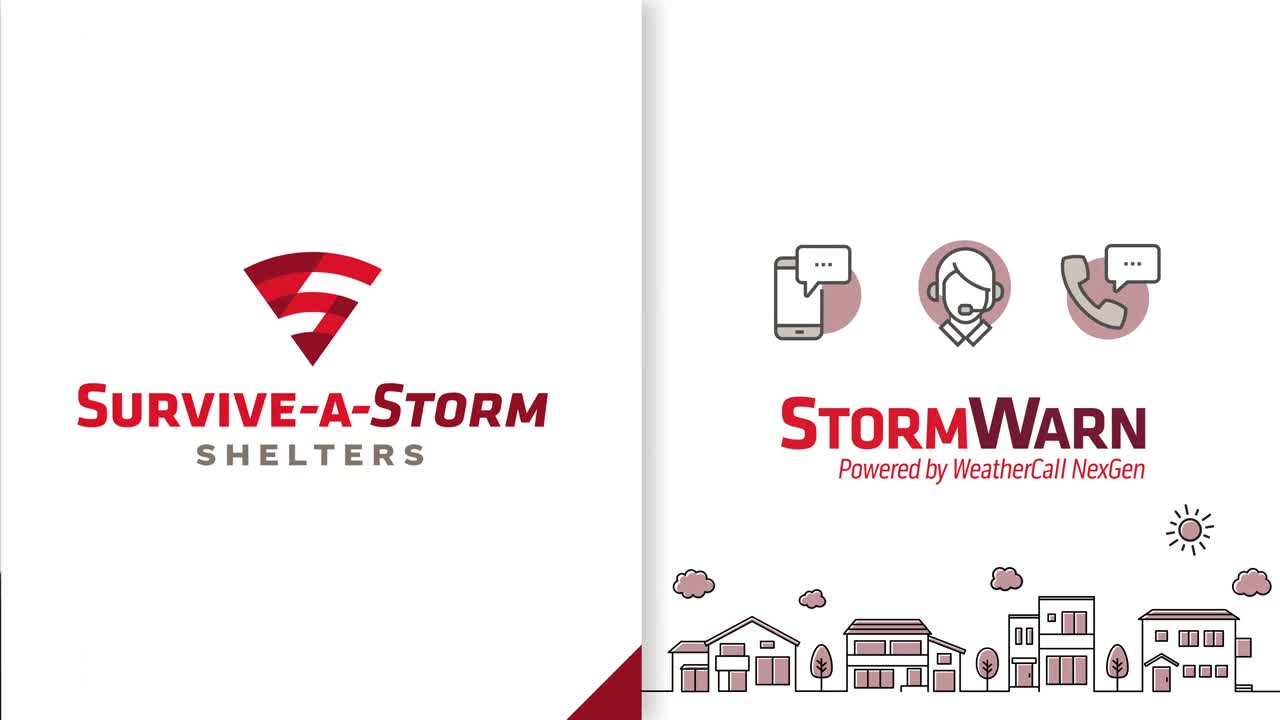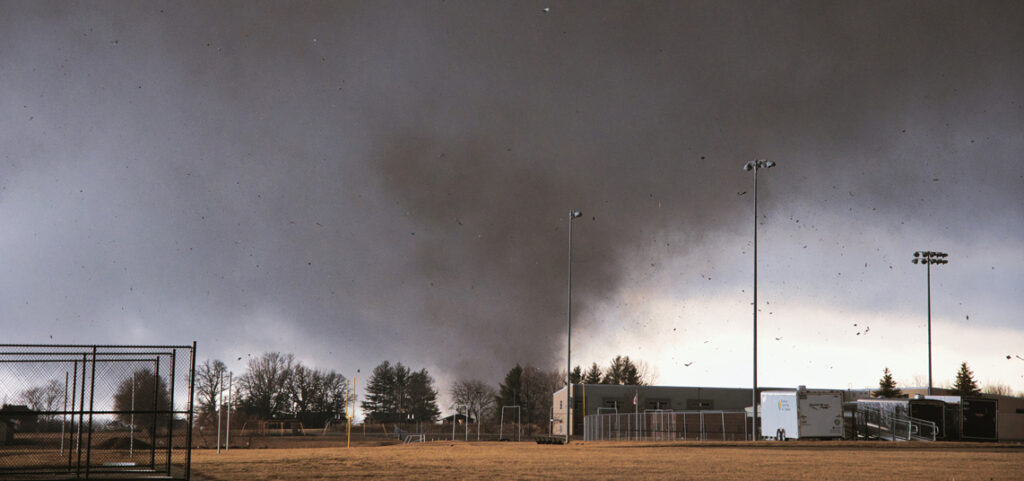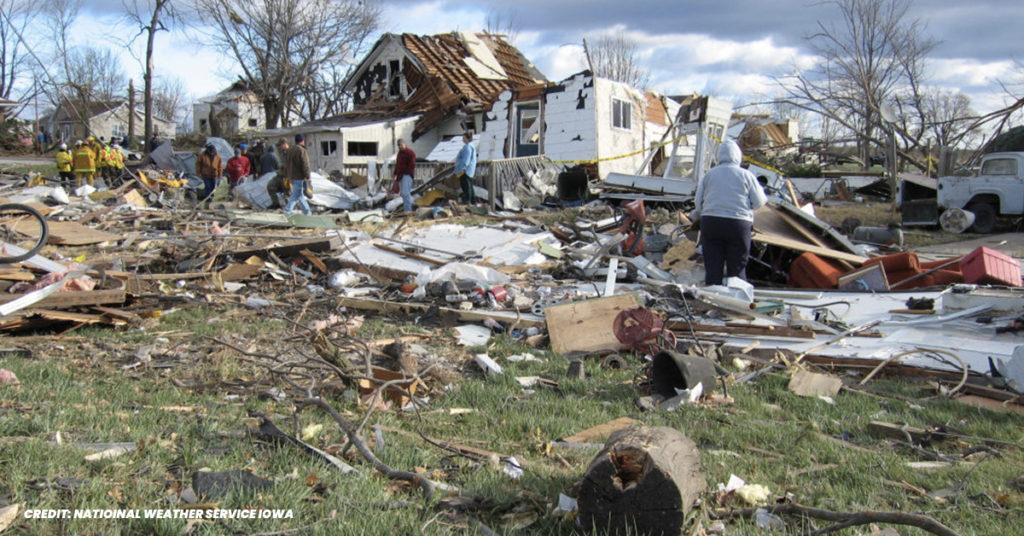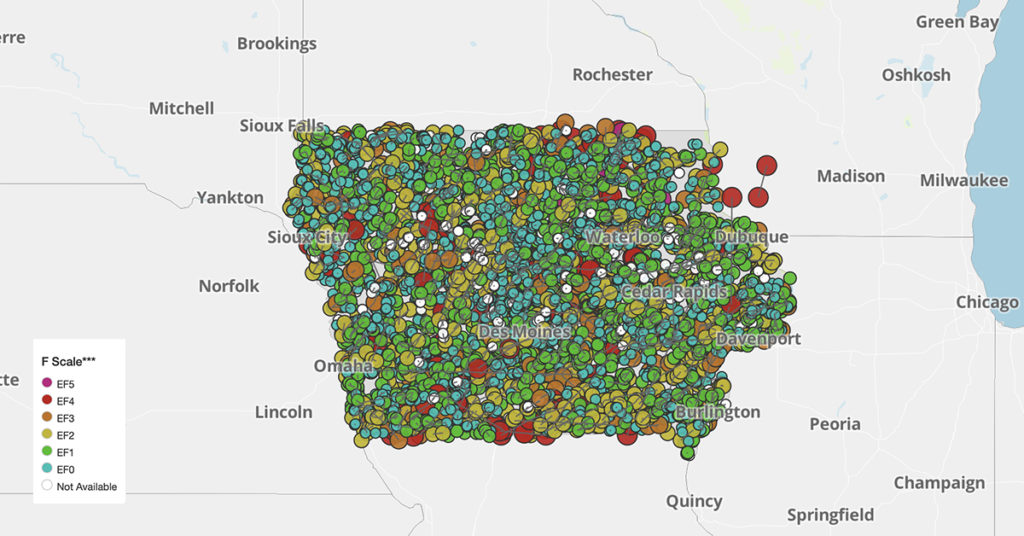Iowa is known for its wide-open plains and severe weather patterns. The state averages 50 tornadoes a year and is one of the top states that experience tornadoes. Throughout its history, the state has experienced hundreds of twisters, many of which have caused significant damage and loss of life. From the infamous Parkersburg tornado in 2008 to the deadliest tornado outbreak in state history in 1974, Iowa residents understand the importance of being prepared for these unpredictable and destructive storms.
- The deadliest tornado in Iowa's history occurred on May 25, 2008, when an EF5 tornado struck the town of Parkersburg, killing nine people and injuring over 70 others.
- Iowa's earliest recorded tornado outbreak occurred on June 3, 1852. 37 tornadoes were reported across Iowa and Minnesota, killing 18 people.
- Iowa has experienced several significant tornado outbreaks over the years. One of the most notable occurred on June 8, 1974, when 27 tornadoes struck Iowa, causing 6 deaths and over 250 injuries.
- Tornadoes have impacted various regions of Iowa, but the central and eastern portions of the state are the most vulnerable.
- The National Weather Service in Des Moines, Iowa, serves as a regional hub for monitoring and issuing tornado warnings for much of the state.
- Iowa has implemented various measures to help protect residents from tornadoes, such as early warning systems and the construction of safe rooms in schools and public buildings.
- Iowans should stay alert and prepared during tornado season, which typically runs from March to November.
Documented Iowa tornadoes since 1950

Know when severe weather is about to strike and when it's time for you to take shelter with our StormWarn texting program.

Preparing for Tornadoes in Iowa
Tornadoes are a serious threat to the safety and well-being of residents in Iowa. The most devastating ones leaving behind a trail of destruction, injuries, and fatalities. If you live in Iowa, you are likely aware that it is essential to take tornado preparation seriously. That means taking several precautions, including having a tornado emergency plan, knowing the safest places to shelter, and having a disaster kit on hand.
It's essential to have a plan in place to ensure that everyone in the household knows what to do in case of a tornado warning. This plan should include identifying the safest location in the home, such as a basement or an interior room on the lowest level, away from windows and doors. If you have a basement, don’t assume that it is tornado-proof. Some basements, for example a walk-out basement, won’t guarantee safety. It would need to have the structural integrity of re-inforced walls and doors too. This prevents occupants from being carried out of the basement, or crushed by debris if the house is moved or damaged.
A designated tornado shelter is the safest place to be during a tornado since it must meet requirements for structural integrity, door design, and impact and wind resistance. There are both above-ground or underground shelters that meet the qualifications of the National Storm Shelter Association. They can be placed in garages, existing basements, or on a thick concrete slab either inside or just outside the home.
Additionally, it's important to have a disaster kit on hand, which should contain essential items like food, water, medication, and first aid supplies. This kit should be kept in a designated spot and easily accessible in case of an emergency. It’s a good idea to have extra charging cables for your phones on hand too. Once the storm is over you will want to contact extended family and friends to check on them. Be sure to have a contact list for communications.
Education is also crucial in preparing for tornadoes. Knowing the signs of an approaching tornado, such as a dark or greenish sky, large hail, or a loud roar similar to a freight train, can help people take the necessary steps to stay safe. Staying informed through local news outlets, weather radios, and smartphone apps can also help people stay up-to-date on the latest weather developments. One of the newest entries in the tornado preparation arsenal is location-based tornado alert systems, like StormWarn, that tells you when your home is in danger and it’s time to take shelter.


Tornado Shelters Near Me in Iowa
Public tornado shelters in Iowa can be found in various locations, including community centers, schools, churches, and government buildings. The best place to start your search for public tornado shelters in Iowa is to check with your local county government. They could have information on the locations of public shelters in your area and can provide you with a list of available options.
Remember that not all communities have public tornado shelters available. Relying on them may not always be the best option during a severe weather event. It's essential to have a plan in place and identify the safest location in your home or workplace to shelter during a tornado. Always stay informed of the latest weather developments and follow the guidance of local authorities during severe weather events to stay safe.
Iowa Tornado Safety Tips
Tornadoes are a real threat in Iowa, as residents of the state have learned. Here are a few tips to help you prepare:
- Stay informed: Keep an eye on the weather forecast, listen to local news or weather radio for updates, and sign up for alerts and notifications from your local emergency management agency.
- Create an emergency plan: Make sure everyone in your household knows what to do in case of a tornado warning. Identify the safest location in your home or workplace, and keep your plan top of mind.
- Have a disaster kit on hand: Prepare a disaster kit with essential supplies, such as food, water, medication, and first aid supplies. Keep the kit in a designated spot and easily accessible in case of an emergency.
- Seek shelter immediately: If a tornado warning is issued, seek shelter immediately in the safest location available. Go to your designated tornado shelter, a basement or an interior room on the lowest level, away from windows and doors.
- Cover your head: If you are not in a designated shelter, some experts recommend covering your head from flying debris by using a sports or bike helmet or covering yourself with a mattress.
- Avoid windows and doors: Stay away from windows and doors, which can shatter and cause injury.
- Stay low: If you are in a multi-story building or high-rise, move to the lowest level and into a small interior room (like a bathroom) or hallway.
- Stay informed during the storm: If you cannot hear tornado sirens or if you are in a location without a warning system, monitor the weather and stay informed of the storm's location and direction.
- Wait for the all-clear: Do not leave your safe location until the tornado warning has been lifted and you have received confirmation that it is safe to do so.
Remember that tornadoes can strike quickly, so it's important to watch for warnings and take them seriously. By following these tornado safety tips, you can help protect yourself and your loved ones during severe weather events in Iowa.

Iowa Tornado Shelter FAQs
Q: What are the requirements for a building to be designated as a tornado shelter in Iowa?
A: In Iowa, a building designated as a public or commercial tornado shelter must comply with the guidelines set forth by the International Code Council (ICC) and the National Storm Shelter Association (NSSA). These guidelines cover the structural design, construction materials, and location of the shelter to ensure it can withstand the high winds and flying debris associated with tornadoes. The building must also have sufficient ventilation and emergency exits. Many homeowners will also choose to comply to these same standards.
Q: How do I know if there is a tornado shelter in my community in Iowa?
A: You can find out if there is a tornado shelter in your community in Iowa by contacting your local city or county emergency management agency. They maintain records of public shelters and can provide you with their locations. You can also check the FEMA website for a list of qualified shelters in your area.
Q: Are there any public tornado shelters available for people who live in mobile homes in Iowa?
A: While specific resources may vary by community, many areas in Iowa do offer public tornado shelters for residents, including those who live in mobile homes. Contact your local emergency management agency to find out about the resources available in your specific area. You can also contact the management of your mobile home park to find out if they have a tornado plan in place, and a designated shelter.
Q: How many people can a typical tornado shelter accommodate?
A: The capacity of a tornado shelter can vary widely based on its size and design. However, the standard recommendation is a minimum of 5 square feet per person for community shelters. For family shelters, the size can be smaller, but it should still be adequate to accommodate all family members comfortably. If there is anyone in your household with a disability that would require more space, it would be important to plan for that accommodation when buying your shelter.
Q: Are there any special considerations for people with disabilities when it comes to tornado shelters in Iowa?
A: Yes, public or commercial tornado shelters in Iowa should be accessible to people with disabilities according to the Americans with Disabilities Act (ADA) guidelines. This includes providing accessible routes, entrances, and spaces inside the shelter, as well as appropriate signage and emergency communication systems.
Q: What supplies should I bring with me to a tornado shelter?
A: When going to a public tornado shelter, it’s a good idea to ask what you are allowed to bring with you, since space may be limited. Consider packing small amount of water, snacks, electronic devices and their chargers, as well as medications that will need to be taken in the time you will be there. Other possibilities are a first aid kit, important documents, cash and a change of clothes. Also consider items for children or elderly family members, such as diapers, formula, or special medications. If you have a home tornado shelter, you can choose what you will need and possibly even store these items inside the shelter.
Q: Can I bring my pets with me to a tornado shelter in Iowa?
A: Policies about pets can vary from shelter to shelter. Some may allow pets, while others may not due to health and safety concerns. It's best to check with your local shelter in advance. If pets are not allowed, make a plan for your pets' safety during severe weather.
Q: How do I access tornado shelters during severe weather events in Iowa?
A: In the event of a severe weather warning, local authorities or the media will typically provide information on where and when to seek shelter. It's important to have a battery-powered weather radio to stay informed during power outages. Remember to act quickly and calmly when a tornado warning is issued.
Q: Are there any tornado shelter grants or financial assistance available for homeowners in Iowa?
A: Yes, financial assistance for building tornado shelters may be available through programs like the FEMA Hazard Mitigation Assistance program or local initiatives. Contact your local emergency management agency or check the FEMA website for more information on the assistance available in your area. Some companies may also offer financing to purchase a residential tornado shelter.
Q: What is the process for constructing a tornado safe room or shelter on my property in Iowa?
A: Constructing a tornado safe room or shelter on your property involves several steps. First, you'll need to choose a design that meets ICC and NSSA guidelines. Then, depending on the model you choose, you may need to obtain the necessary building permits. A reputable vendor should be able to guide you in what is necessary to put a tornado shelter on your property.



